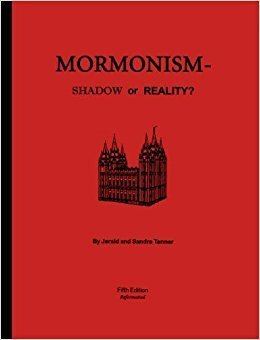8 /10 1 Votes
Country United States Publication date 1963 Originally published 1963 | 4/5 Goodreads Language English Pages 576 pp (1987 edition) | |||||||||||||||||||||||||||||||||
 | ||||||||||||||||||||||||||||||||||
Publisher Utah Lighthouse Ministry Media type Print (Hardcover, Paperback) Subject Criticism of The Church of Jesus Christ of Latter-day Saints Similar The Changing World of, No Man Knows My History, View of the Hebrews, An Insider's View of Mormon, Mormonism Unvailed | ||||||||||||||||||||||||||||||||||
Mormonism: Shadow or Reality? is a 1963 book by Jerald and Sandra Tanner that is highly critical of The Church of Jesus Christ of Latter-day Saints (LDS Church).
Contents
Description
The book was originally entitled Mormonism: A Study of Mormon History and Doctrine and has been reprinted five times since (the latest edition was in 2008). The book is a long, densely written work full of copies of early Latter Day Saints documents accompanied by commentary. It has subsequently been revised and was the basis for the Tanner's more readable later book, The Changing World of Mormonism.
Mormonism: Shadow or Reality? deals with many subjects in a critical view, including the Book of Mormon and other LDS scriptures, Joseph Smith's life, alleged false prophecies, the missionary system, controversial historical incidents and subjects (Mountain Meadows massacre, wealth, the priesthood ban, polygamy) and many doctrines and practices (Adam-God doctrine, temple ceremonies).
Critical reception
Mormon book dealer Curt Bench listed this book among 50 important books on Mormonism in the first 150 years, including it as one of six "anti-Mormon" titles on the list.
The book has been described by Dean Helland of Oral Roberts University as "the heavyweight of all books on Mormonism". However, D. Michael Quinn, a historian at Brigham Young University, took issue with the Tanners' work, calling it a "distorted view of Mormonism". Danel W. Bachman, of the Foundation for Apologetic Information & Research, a group consisting of Mormons who seek to defend their faith, concluded that he found in the book "propagandistic techniques and instances of egregious misuse of documentary evidence".
